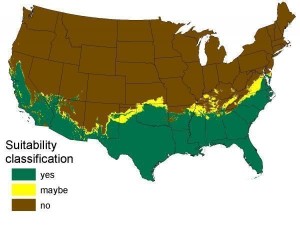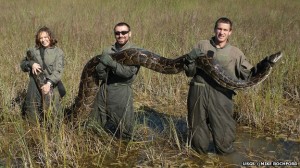Can the Carp Rendering business model be used for Burmese Pythons?
It works if States pay a bounty
I’ve been looking at scaled skin products for a friend, and noticed an opportunity to harvest Burmese Pythons. Being a US issue, US citizens would have to run the venture. Attached here is a quick opportunity spreadsheet.
Source Idea – Invasive Carp Rendering:
American Heartland Fish Products (AHFP) is turning invasive carp into dehydrated meal and fish oil. “The government wants this fish removed in large volumes, and this is the way to do it” (Gray Magee, CEO):
- Article 01, Article 02
- AHFP’s Rendering Tech partner is Auburn University: Link 01, Link 02, Link 03, Link 04
Question: Can we do the same with invasive Burmese Pythons?
The BBC reports: “The snake-skin business is extremely lucrative according to this report, which estimates that half a million python skins are exported annually from South East Asia in a trade worth $1bn (£625m) a year. The nature of the trade is such that there is a strong financial incentive all along the supply chain to use illegal snakes. A skin that a villager in Indonesia might sell for $30 (£19) will end up as a bag in fashion boutiques in France or Italy selling for $15,000 (£9,300). The highest demand is for skins between three and four metres long.”
Can we reduce the harm of their spread?

US climate regions that could support invasive Burmese Pythons: “By 2100 the yellow “maybe” area is expected to extend north substantially, due to projected climate change” (Science Daily).
US Market Opportunity:
- * Invasive species NOT protected
- * Skins sold into high value luxury market
- * Entrails sold for rendering
- * Components used for Chinese traditional medicine market
Python Pits (Farms) & State Govt Bounty is probably the way to go:
- * Enclosed holding pits at factories
- * Wild Pythons delivered at Bounty Rate
- * Wild Pythons = zero breeding cost to factory
- * Factory assumes processing costs
Markets & Local Industry Incentive:
- * Protects human lives and property
- * Acts to protect loss of biodiversity across Southern USA
- * Increases competitive pressure on illegal trade of native Asian species
- * Cuts into illegal trade because of Asian demand for high-quality US goods
- * Uses ban on illegal wildlife imports to NAFTA market to develop US industry
- * Basic product line and a Premium (mystique-laden) Wild product line
- * Develops sewn goods industry in southern US states
- * Entrails rendered for other uses
Note for Spreadsheet Model:
- * Government Bounty Rate = per Pound
- * Retail Trade Rate = per Metre
Background Data:
- * Article 01 – BBC article on Invasive Species
- * Article 02 – Illegal Python trade value
- * Article 03 – International Trade Centre report on SE Asian Python Skins
Product Needs Estimate:
- * Estimated size for handbag: 4 handbags from 1 x 4 metre skin
- * Fabric for 1 large handbag: 3/4 yard = for ease of calculation, 1 metre wide:
- * Estimated girth of python in image in BBC article = 20 inches
- * Data Source: http://buyandcreate.com/blog/fabric-measurement-guide
Author: Dave Huer

